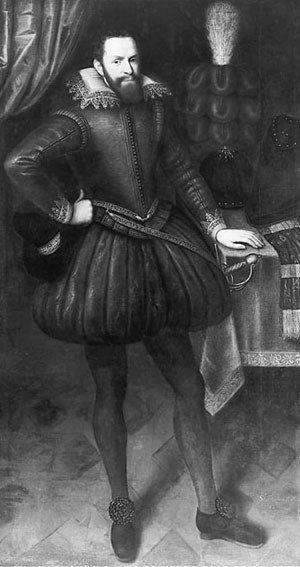
Unknown artist, Sir Thomas Dale, England, ca. 1615. Oil on canvas. 80" x 45". (Courtesy, Virginia Museum of Fine Art, Adolph D. and Wilkins C. Williams Fund; photo, Ron Jennings.)
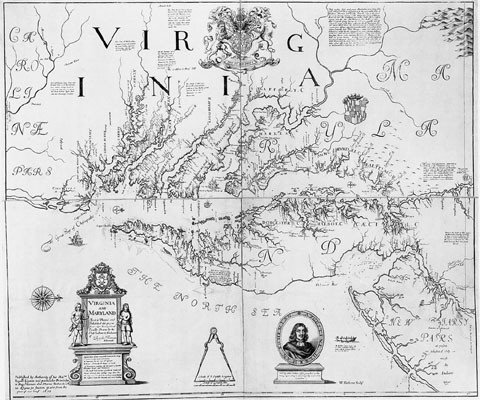
Augustine Herrman, Virginia and Maryland, 1670. Engraving on paper. 32" x 37". (Courtesy, John Carter Brown Library, Brown University.)
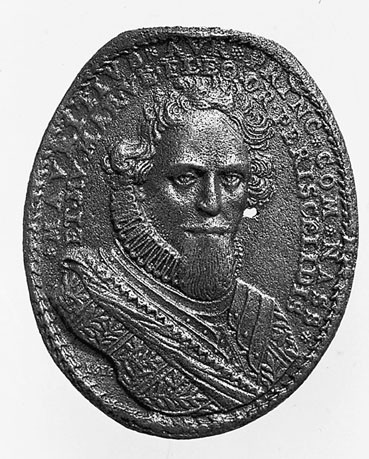
Medallion of Prince Maurice of Orange, Holland, 1615. Cast brass. 1 3/4" x 1 1/2". (Courtesy, Flowerdew Hundred Museum.)
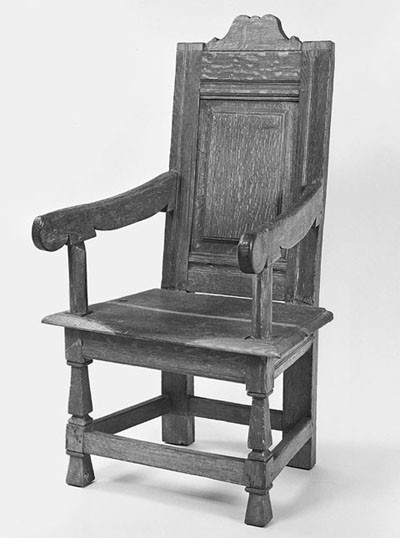
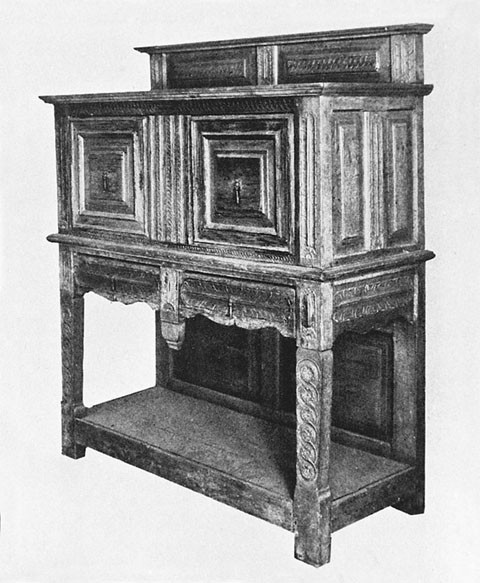
Court cupboard, possibly Virginia, 1620–1680. Oak. (Illustrated in Antiques 24, no. 9 [October 1938]: 216.)

Clothes cupboard, Virginia, 1650–1690. Walnut with yellow pine. H. 61 1/2", W. 61 3/4", D. 20". (Collection of the Museum of Early Southern Decorative Arts.)

Detail of the back of the clothes cupboard illustrated in fig. 6.
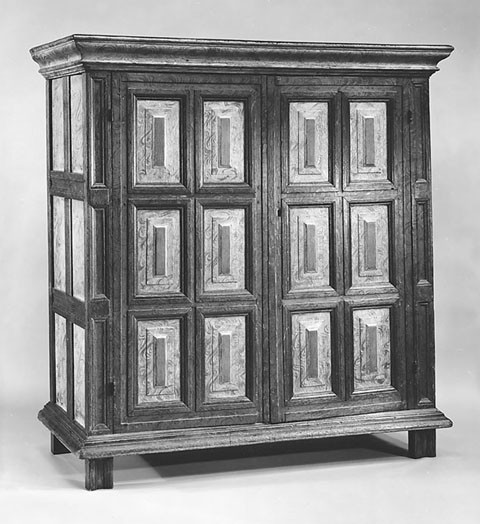
Kast, New York, 1650–1700. White and red oak. H. 70", W. 67", D. 25". (Courtesy, The Metropolitan Museum of Art, Gift of Millia Davenport, 1988 (1988.21) Photograph ©The Metropolitan Museum of Art.)
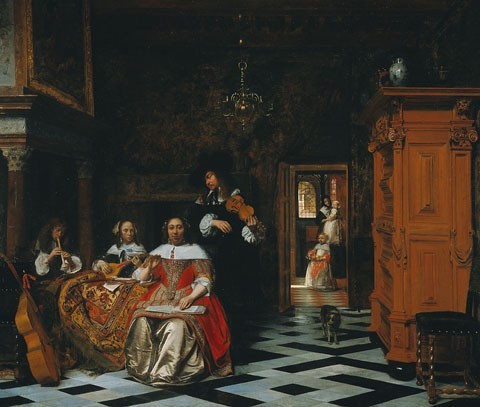
Pieter de Hooch, Portrait of a Family Making Music, Holland, 1663. Oil on canvas. 39 3/4" x 46". (Courtesy, Cleveland Museum of Art, gift of the Hanna Fund.)
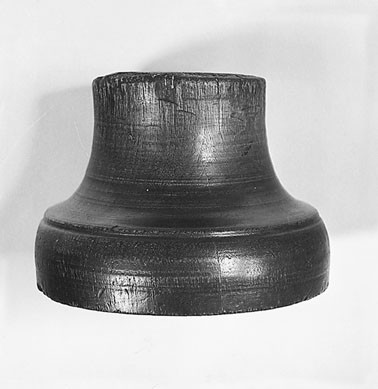
Detail of a turned foot on the clothes cupboard illustrated in fig. 6.
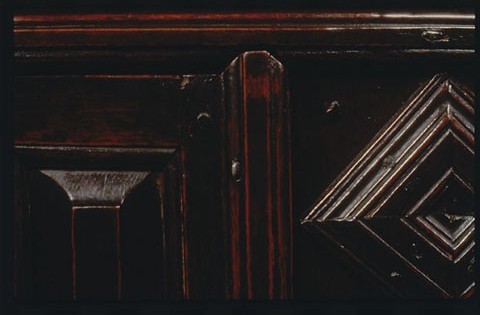
Detail of the mitered joinery and raised panels on the clothes cupboard illustrated in fig. 6.
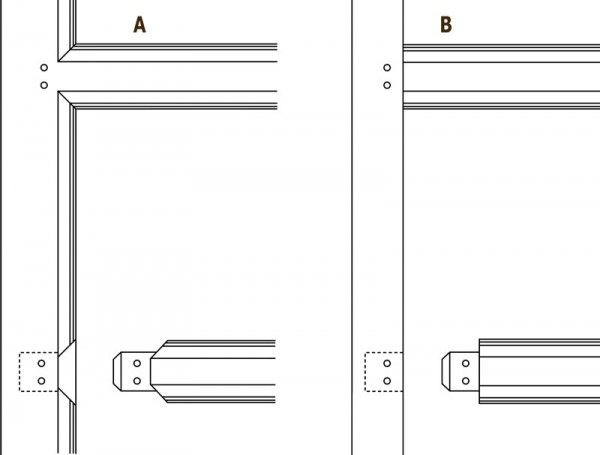
Drawing of a (a) mitered mortise-and-tenon joint and (b) flat-faced mortise-and-tenon joint. (Adapted from a drawing in Peter M. Kenny, Frances Gruber Safford, and Gilbert T. Vincent, American Kasten: The Dutch-Style Cupboards of New York and New Jersey 1650–1800 [New York: The Metropolitan Museum of Art, 1991], p. 12; artwork, Wynne Patterson.)
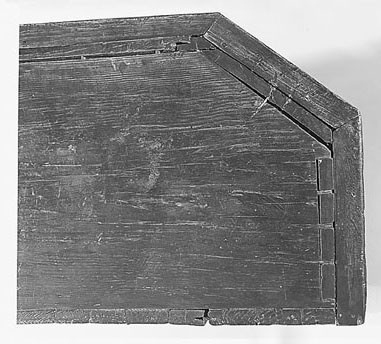
Detail of the dovetailed top and splined backboards on the clothes cupboard illustrated in fig. 6.

Detail of the pegboard in the clothes cupboard illustrated in fig. 6.
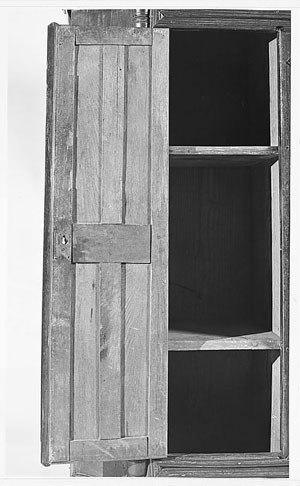
Detail of the interior shelving on the clothes cupboard illustrated in fig. 6.
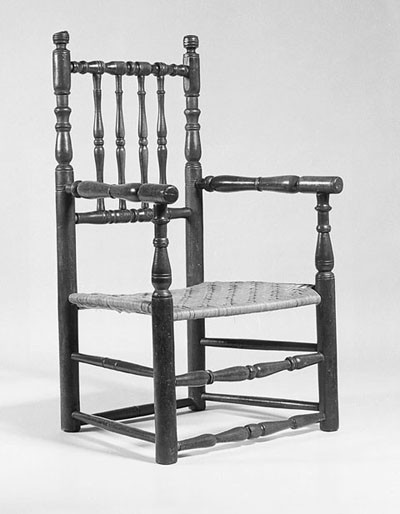
Armchair, southeastern Virginia, 1680–1700. Cherry. H. 41 3/4", W. 23 1/2", D. 23 1/2". (Collection of the Museum of Early Southern Decorative Arts.)
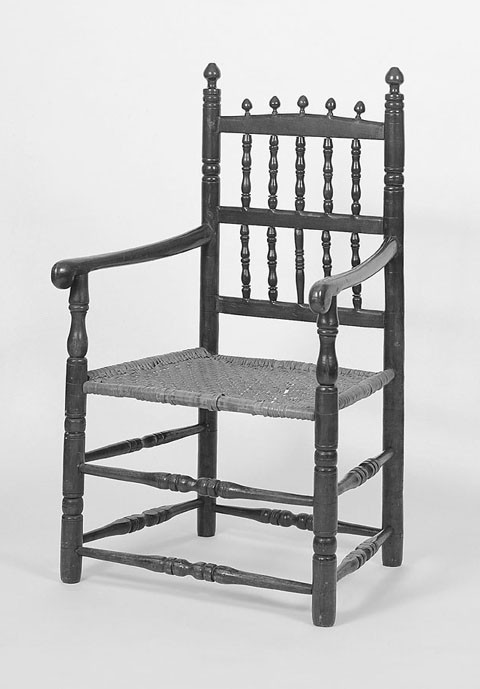
Armchair, Virginia, 1680–1700. Cherry, hickory, and white oak. H. 43 1/2", W. 25", D. 22 3/4". (Collection of the Museum of Early Southern Decorative Arts.)
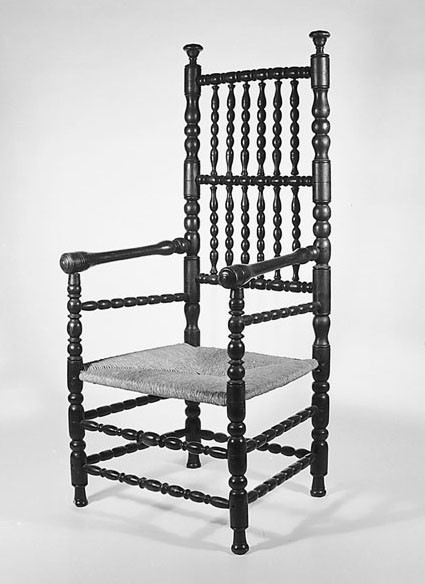
Turned Great Chair, unidentified maker, New York or New Jersey, 1700-1728. Maple, ash, and cherry; painted black. H. 50", W. 23", D. 18". (Courtesy, Albany Institute of History & Art, Rockwell Fund.)
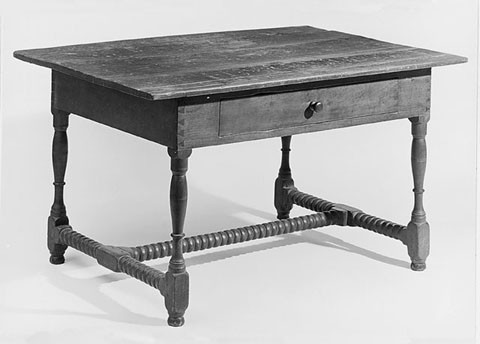
Stretcher table, eastern Virginia, 1690–1720. Walnut with cedrela. H. 26", W. 46 1/4", D. 32 1/4". (Courtesy, H. L. Chalfant Antiques.)

Draw-bar table, New York City, 1690–1710. Red gum with tulip poplar and pine. H. 29 3/4", frame dimensions: 35 7/8" x 20 3/8". (Private collection; photo, Gavin Ashworth.)
